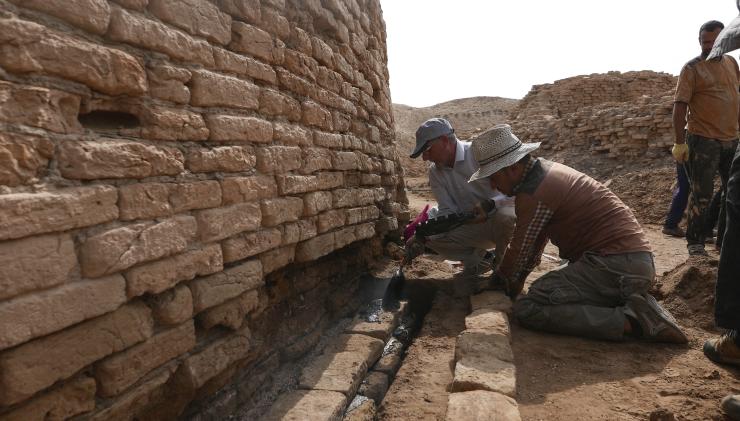Restoration of the 4,000-year-old bridge at Tello in the south of Iraq is seem as a potent symbol for a nation emerging from decades of war.
The British Museum is working with the Iraq State Board of Antiquities & Heritage to undertake the work as part of the Iraq Emergency Heritage Management Training Scheme. The bridge’s conservation will be part of the fourth phase of the scheme, with field training of two groups of trainees from Iraq beginning this autumn. These latest trainees - the first female archaeologists to be trained as part of the five-year project - will arrive in London this month to train at the British Museum in all aspects of archaeological fieldwork and emergency archaeology.

The project also includes the creation of a visitor centre at the site. The British Museum said: “This is a hugely important project to ensure the long-term sustainability of the world’s oldest bridge, which is an incredibly clever piece of ancient engineering on a grand scale. The full conservation programme will not only provide access to the site for the local community and tourists, but it is hoped that it could yield unprecedented finds that may lead to a new cultural centre of interest in the region – one of the poorest provinces of Iraq.”

The bridge was built for the ancient Sumerian city of Girsu and was only rediscovered in 1929. Described at the time as an ‘enigmatic construction’, it has been variously interpreted as a temple, dam and water regulator. “Recent studies using 1930s photographs as well as recently declassified satellite imagery from the 1960s, alongside new research at the site, have confirmed that it was a bridge over an ancient waterway and that it is (at the time of writing) the earliest-known bridge in the world,” said the British Museum. “Since the excavations nearly 90 years ago, the bridge has remained open and exposed, with no identifiable conservation work to address its long-term stability or issues of erosion, and no plans to manage the site or tell its story to the wider world.”





